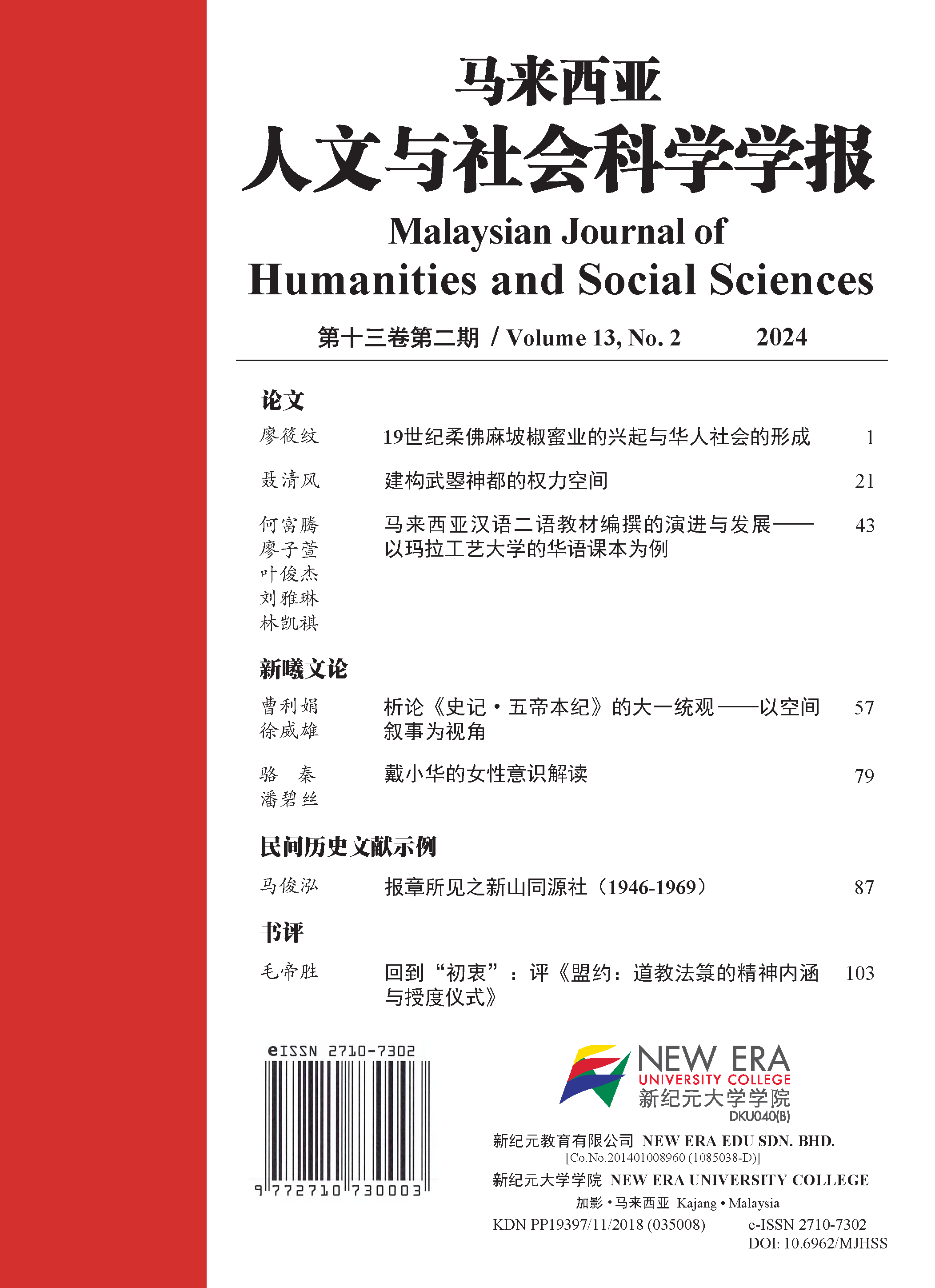报章所见之新山同源社(1946-1969) Thoong Nyien (Hakka) Association Johor Bahru as Seen in the Newspapers (1946-1969)
Keywords:
华人社团、华文报章、新山同源社、客家公会, Chinese association, Chinese newspaper, Thoong Nyien (Hakka) Association, Johor BahruAbstract
过往针对华人社团的研究成果已十分丰硕,但是关于个别华团的一手史料仍相当匮乏,主要来自华团自行编辑出版的纪念特刊及口述资料。本文将以新山同源社为例,采用华文报章文献作为研究的主要材料,拼凑新山同源社千此时期的会务概况,及其在社会、教育和文化等方面的活动,补足既有研究成果对千个别华人社团发展史的空白。
同源社兴建安老院、设置奖贷学金、扩充国乐部等工作,无不有赖于社员与大众的热心支持,捐助的款项和物品报章都有详细记载,即为该社深孚众望的力证。此处正是报章的用武之地,能够由下而上呈现这些微观的层面。
新加坡国家图书馆数位典藏中的报章文献种类繁多,史料价值丰富且检索方便,可用以钩沉已散佚湮没的史料,进行辑佚和考证的工作,拓展新马华人社团研究的史料来源。倘若学界积极投入资源,善用科技系统性收集、整理和研究相关史料,相信假以时日必定能从中挖掘出更丰富的成果。
In the past, research on Chinese communities have been very fruitful, but first-hand historical materials on individual Chinese communities were still quite scarce, sourced mainly from commemorative special issues and oral materials edited and published by Chinese communities themselves. This article will take the Thoong Nyien (Hakka) Association Johor Bahru as an example, using Chinese newspaper documents as the main research materials, to piece together the Thoong Nyien (Hakka) Association Johor Bahru's affairs during this period, as well as its activities in social, educational, and cultural aspects to fill in the gaps in the existing scholarship on the development history of individual Chinese communities. The Thoong Nyien (Hakka) Association's work in building nursing homes, setting up scholarships and loans, and expanding the Chinese music club all relied on the enthusiastic support of its members and the public. The donated funds and items were recorded in detail in the newspapers, which is a strong proof that the society is highly respected by the public. This is where newspapers come in handy, presenting these micro-levels from the bottom up. The newspaper documents in the digital collection of the National Library of Singapore are of various types, rich in historical value and easy to search. They can be used to retrieve lost historical materials, conduct collection and verification work, and expand the source of historical materials for the study of Chinese communities in Singapore and Malaysia. If the academic community actively invests resources and makes good use of technology to systematically collect, organize, and study relevant historical materials, I believe that in time, more abundant results will be unearthed.




